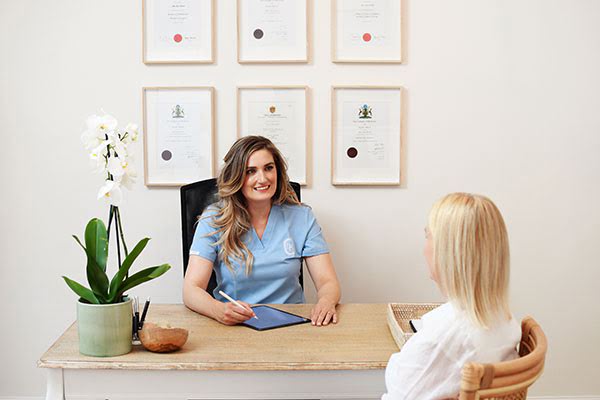
Frequently asked questions
First consultation: R1 650.00
Follow-up consultation (within six months): R 1050.00
These are subject to change and may be adjusted on an annual basis.
The consultation fee is only for specialist consultation and does not include cryotherapy or any other minor procedures.
Any specimens sent to the pathology laboratory after a procedure will be billed to you separately from the pathology laboratory and not be part of your Dermatology House account.
Yes, all consultations, treatments, procedures and products must be settled on the day. There are various payment options: cash, credit card or debit card.
An invoice will be emailed to you and it is your responsibility to claim a refund from your medical aid.
This can differ between the various medical aids and it will also depend upon which option you have chosen.
If you notice any changes in the size, shape, colour, elevation or texture of your moles, it's advisable to get them checked. If you have noticed bleeding or ulceration of a mole, please mention this when making your booking.
If you have a family history of melanoma or if you have a large number of moles, it is crucial to have regular check-ups with our dermatologists. Early detection of melanoma can greatly improve outcomes.
All patients undergo a full-body skin examination using a dermatoscope, a handheld instrument employed by dermatologists to closely assess the skin, including moles and other lesions. This magnifying tool, equipped with light, offers a detailed view of the skin's surface.
Dermoscopy, involving the analysis of colours and structures within skin lesions with a dermatoscope, aids in distinguishing between benign and potentially malignant conditions, especially facilitating early detection of melanoma and other skin cancers.
Dermoscopy reveals features not visible to the naked eye, helping assess pigment patterns and vascular structures. This non-invasive and painless procedure enhances the accuracy of skin examinations and is often used alongside methods like mole mapping or biopsy for a thorough assessment of skin lesions.
There is no on-site parking, but there is ample paid street parking on Dean Street and unpaid street parking near SACS, just off Dean Street. Alternatively, it is easy to park in the Dean Street Arcade mall; it is just a short 2-minute walk from there to the practice.
Dermatologists and dermal aestheticians have very different levels of training, scope of practice, and responsibilities. Here's a breakdown:
1. Dermatologist
Definition: A dermatologist is a medical doctor who specialises in diagnosing and treating diseases of the skin, hair, and nails.
Training:
- 6 years: Medical degree (e.g. MBBCh or MBChB)
- 3 years: Internship and community service
- 4 years: Registrar training in dermatology (MMed in Dermatology)
- Must pass the CMSA specialist exams to qualify as a Fellow of the College of Dermatologists (FC Derm(SA))
- Some dermatologists may also have several years of experience in fields like internal medicine or paediatrics, or may have worked as dermatology medical officers before entering specialist training.
Scope of practice:
- Diagnose and treat medical skin conditions (e.g. acne, eczema, psoriasis, skin cancer)
- Perform surgical procedures (e.g. excisions, biopsies, cryotherapy)
- Prescribe systemic medications (e.g. isotretinoin, immunosuppressants)
- Provide cosmetic treatments (e.g. neurotoxin injections, lasers), but based on medical expertise
Regulated by: Health Professions Council of South Africa (HPCSA) as a medical specialist
2. Dermal Aesthetician
Definition: A dermal aesthetician (sometimes called a skin therapist or somatologist) is a non-medical skincare professional trained in advanced aesthetic and cosmetic skin treatments.
Training:
- Usually holds a diploma or degree in somatology or skincare technology (e.g. CIDESCO, ITEC, SAAHSP-accredited)
- May have additional training in aesthetic treatments like chemical peels, microneedling, laser, and skin analysis
Scope of practice:
- Perform non-invasive skin treatments (e.g. facials, superficial chemical peels, microdermabrasion, microneedling under certain limits)
- Advise on skincare routines and cosmeceutical products
- Work under the guidance or supervision of a medical professional when performing more advanced treatments (e.g. deeper peels, certain lasers)
Not registered with the HPCSA, but may belong to professional bodies like SAAHSP or CIDESCO
Not every patient requires mole mapping. Based on your risk factors and specific concerns, a decision will be made during your initial consultation with our dermatologists. For all new patients, an initial consultation is mandatory before a mole mapping procedure is performed. Mole mapping is billed separately from the dermatologist’s consultation fee.
